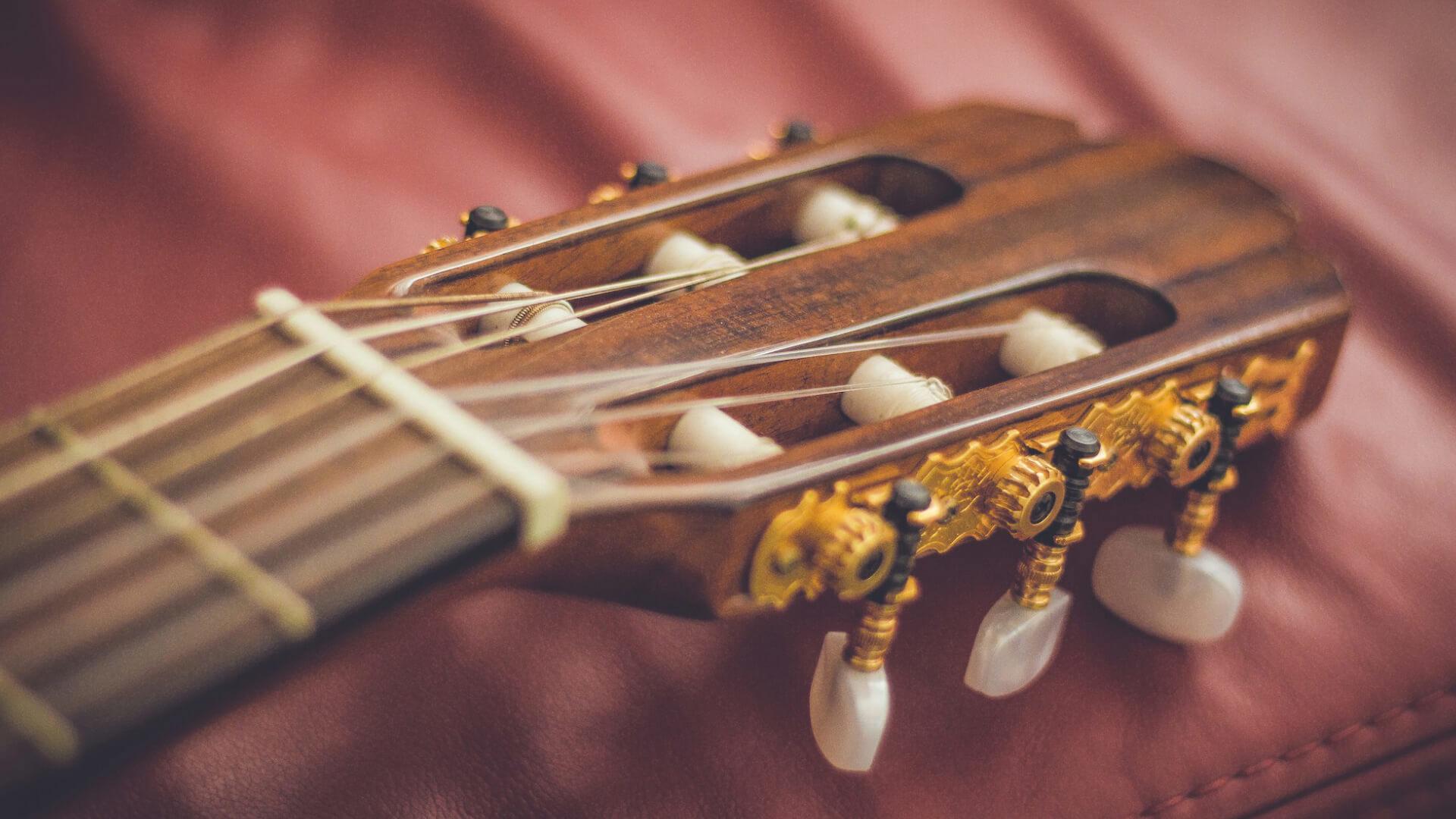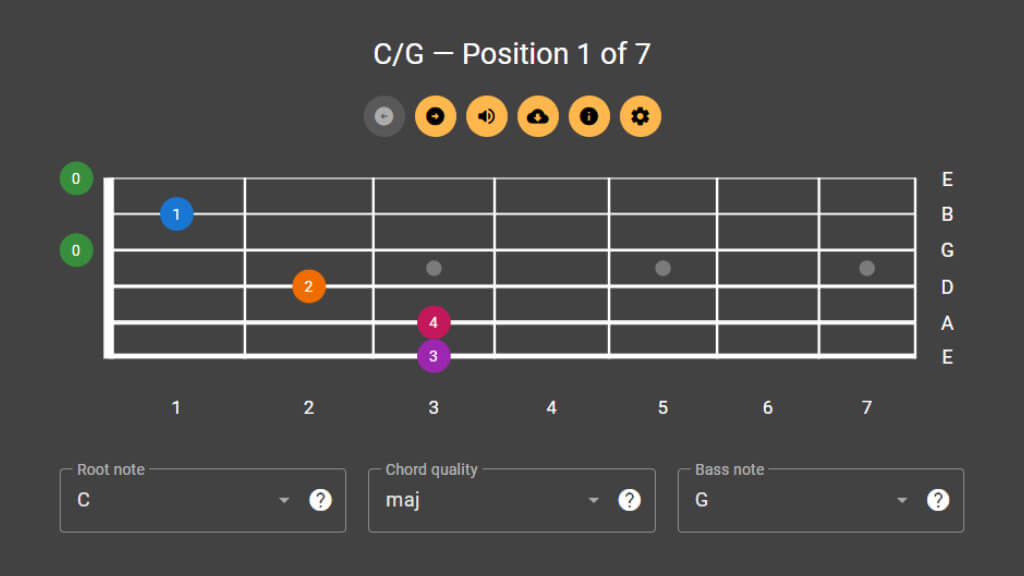The guitar is one of the most versatile instruments in the world of music. It allows for an incredible variety of sounds, yet we often limit ourselves to standard tuning, overlooking its limitless possibilities. Unusual guitar tunings aren’t just a way to alter the sound — they’re a powerful tool for fostering creativity, especially in fingerstyle playing.
Alternative tunings open up new horizons for melodies, chords, and textures that simply aren’t possible in standard tuning. They require a fresh approach to playing technique, leading to a deeper understanding of the instrument and greater control over tone. They also help you stand out as a guitarist, adding uniqueness and expressiveness to your compositions. Many professional fingerstyle guitarists, such as Andy McKee and Calum Graham, frequently use alternative tunings to achieve their signature sounds.
Step outside your comfort zone and explore the world of unusual guitar tunings. In this article, we’ll introduce some of the most popular options, explain how to set them up, and highlight their benefits for fingerstyle playing.
What Are Alternative Tunings?
When most guitarists think of tuning, they immediately picture the standard EADGBE setup. But what if we told you that’s just the beginning? Alternative tunings involve adjusting the strings to different pitches to unlock new sonic possibilities and unexpected musical ideas. They play a key role in creative development and are used by guitarists worldwide to:
- Enrich harmonies: Unconventional tunings create unique resonances, adding depth and richness to your sound.
- Simplify complex chords: Many intricate chord shapes become easier to play with a modified tuning.
- Expand musical possibilities: Changing the tuning unlocks new harmonic solutions, making it easier to discover interesting chord voicings and melodies.
Alternative tunings are perfect for fingerstyle guitarists looking for fresh ways to express their musical ideas. They’re also valuable for composers working across different genres, as they enable the creation of distinctive harmonies and textures. Even beginners who want to experiment and improve their technique will find them a great source of inspiration and growth.
Popular Alternative Tunings for Fingerstyle
Let’s explore some popular tunings that can add variety to your music and inspire new ideas. Each tuning comes with an example composition that demonstrates its sound. These examples will help you better understand the characteristics of each tuning and may even inspire your own experiments.
1. Drop D
Drop D or (D-A-D-G-B-E) is one of the simplest and most popular tunings. To achieve it, you only need to lower the sixth string from E to D. This tuning adds more depth to the sound with powerful bass notes and makes playing easier. Chords with bass notes on the sixth string become more accessible, and the rich low-end frequencies are perfect for expressive melodies. Using this tuning, I recorded a cover of the song “A Whole New World” from Aladdin.
Video by Dmitry Pimonov on YouTube
2. DADGAD
D-A-D-G-A-D is a tuning that creates a mystical and resonant sound, making it perfect for melodic compositions. It is widely used in Celtic music and fingerstyle thanks to its rich tone and expressiveness.
To tune your guitar to DADGAD from standard EADGBE, lower the 6th string from E to D, the 2nd string from B to A, and the 1st string from E to D. The open strings make playing feel smoother and more natural, while the ethnic character of this tuning adds a unique atmosphere to the music.
Video by Music City Roots on YouTube
3. Open D
Open D or (D-A-D-F#-A-D) is a tuning that provides a bright and rich sound, making it ideal for open-string melodies. It is widely used in fingerstyle and slide guitar playing due to its strong resonance and ease of chord voicings.
To tune your guitar to Open D from standard EADGBE, lower the 6th string from E to D, the 3rd string from G to F#, the 2nd string from B to A, and the 1st string from E to D. This tuning makes complex chords easier to play and unlocks new possibilities for harmonic exploration.
Video by Sungha Jung on YouTube
4. Double Drop D
Double Drop D or (D-A-D-G-B-D) is a tuning where both the 1st and 6th strings are lowered to D, creating a deep and well-balanced sound with a strong bass presence. It is often used in acoustic music, as the open strings add fullness and richness to chords.
To tune your guitar to Double Drop D from standard EADGBE, lower the 6th string from E to D and the 1st string from E to D. This tuning simplifies bass-heavy playing, makes chord shapes more convenient, and is excellent for both solo compositions and accompaniment.
Video by Yuki Matsui on YouTube
5. FACGCE
F-A-C-G-C-E is an unusual tuning that creates a harmonically rich sound. It enhances the expressiveness and depth of chords, while the open strings form a lush harmonic foundation. This tuning is excellent for fingerstyle, jazz, and atmospheric instrumental compositions, allowing for unique voicings and intriguing melodic lines.
To tune your guitar to FACGCE from standard EADGBE, follow these steps: Raise the 6th string from E to F, keep the 5th string as A, lower the 4th string from D to C, keep the 3rd string as G, raise the 2nd string from B to C, and leave the 1st string as E. This tuning gives the sound warmth and spaciousness, blending powerful bass notes with clear upper tones. It is perfect for complex harmonies, arpeggios, and expressive melodies, opening up new creative possibilities.
Video by Candyrat Records on YouTube
Experimenting with Unusual Tunings
Alternative tunings enrich the sound and make fingerstyle playing even more expressive. Some tunings enhance the bass line, while others add an atmospheric feel or create unique harmonies. Drop D and Double Drop D give chords more depth and fullness, whereas DADGAD and Open D unlock the potential of open strings, creating a spacious and airy texture. For more unconventional options, consider FACGCE and other exotic tunings that introduce fresh tonal colors into your music.
When experimenting with tunings, it’s important to adapt them to the specific composition. If you already have a melody, try changing the tuning to discover a new perspective: adjust the strings so that key notes resonate as open strings, and incorporate chords that take advantage of the guitar’s natural resonance for greater expressiveness. Sometimes, even a small pitch adjustment on one string can add unexpected depth to a familiar chord progression.
Unusual tunings aren’t just pre-existing schemes — they offer the chance to create your own unique sound. Start small by altering the pitch of one or two strings, relying on your ear to guide you. Don’t limit yourself to a single genre — try using a new tuning in folk or jazz to explore its full potential. Keep track of successful tunings so you don’t forget their sound, and use a chromatic tuner for accuracy. Don’t be afraid of mistakes — sometimes, the most unexpected combinations become the foundation of a unique composition.
To determine if a tuning works well, play some chords, test melodies, and experiment with combining bass and high notes. Pay attention to how harmonically rich and resonant the tuning sounds, how comfortable it is to use, and whether it sparks new musical ideas. The more you experiment, the more you’ll discover new sounds and textures. Step beyond the familiar — this is how a truly personal musical style is born.
Challenges and How to Overcome Them
Experimenting with unusual guitar tunings opens up new musical possibilities, but it also comes with certain challenges. To make the most of alternative tunings while avoiding potential issues, it’s important to understand and address these pitfalls.
1. String Tension Changes and Their Effect on the Neck
Alternative tunings can significantly alter string tension, which affects the guitar neck and truss rod. Lower tunings reduce tension, potentially causing the neck to bow backward, shortening the scale length, and creating unwanted fret buzz. Higher tunings, on the other hand, increase tension, which can lead to excessive neck relief and a higher risk of string breakage.
To avoid problems, adjust the tuning gradually, allowing the instrument to adapt. Regularly check the neck’s position and adjust the truss rod if necessary. Choose the right string gauge: for lower tunings, thicker strings help maintain proper tension and prevent buzzing, while for higher tunings, thinner strings reduce stress and minimize breakage risk.
It's also essential to consider tuning stability when choosing a guitar. Instruments with a more rigid neck, such as those with a dual truss rod system, handle frequent tension changes better. Regular guitar maintenance and careful attention to string tension will help keep your tuning stable and extend the lifespan of your instrument.
2. Tuning Instability and How to Prevent It
Frequent tuning changes can lead to instability, especially if the guitar isn’t designed to handle constant tension shifts. Low-quality tuning pegs, worn-out strings, and an improperly adjusted truss rod can worsen the issue, making the instrument go out of tune quickly.
To minimize this problem, use a high-quality tuner and check your tuning before every practice session, performance, or recording. Change your strings regularly, as they lose elasticity over time and struggle to maintain tension. If your guitar frequently loses tuning stability, consider upgrading to locking tuners or investing in an instrument with a more stable neck construction.
Additionally, applying graphite lubricant to the nut and bridge saddle can reduce friction and improve tuning stability. Proper instrument care and choosing the right components will help your guitar maintain its tuning longer, even with frequent adjustments.
3. Adapting Your Playing Technique to Unusual Tunings
Changing your guitar’s tuning affects not only the sound but also the familiar chord fingerings. Many standard chord shapes lose their usual structure, and note positions on the fretboard shift, which can be confusing and make playing more challenging. As a result, guitarists must relearn chord voicings, melodies, and even certain playing techniques.
To adapt to new tunings, start with simple exercises. Learn new fingerings gradually, moving from single notes and basic intervals to full chords. Make use of open strings to achieve a rich, resonant sound while making harmonic structures easier to play. Play slowly, focusing on note placement and how the strings interact within the new tuning.
It’s also helpful to rearrange familiar songs to fit the altered tuning. This approach will help you adjust to the new note positions faster and may even lead to fresh sonic discoveries, inspiring your own unique arrangements. The key is patience and practice — the more you play in an unfamiliar tuning, the more natural it will become.
4. String Wear and How to Minimize It
Frequent tuning changes put additional stress on strings, leading to faster wear and tear. Constant tension shifts weaken the material, degrading sound quality and increasing the risk of breakage, especially on thinner strings. Over time, this results in a duller tone, requiring more frequent string replacements.
To extend the lifespan of your strings, use coated strings, which are more durable and maintain their sound longer. Change strings as needed, not just based on appearance but also by listening for a loss of tonal clarity. If you frequently experiment with tunings, consider hybrid string sets, where the bass strings are thicker for stability, while the treble strings remain flexible. Additionally, avoid sudden tension changes — transitioning between tunings should be done gradually.
For detailed recommendations on choosing strings for fingerstyle, check out the article “The Sound of Fingerstyle: How to Choose Strings for the Best Tone”.
5. Avoiding Limitations: How Not to Box Yourself In
Some tunings can be too specialized, restricting musical possibilities. For example, open tunings are great for certain chord voicings but may make standard progressions harder to play. In some cases, an unusual tuning enhances playability in one style but makes it less versatile for others.
To prevent this, use alternative tunings selectively — in compositions where they truly enhance the sound. Don’t abandon standard tuning altogether, as it remains the most universal and adaptable for various playing techniques. Experiment freely, but aim for a balance between playability, expressiveness, and the ability to transition easily between styles.

Photo by Marcin Nowak on Unsplash
Challenges are an inevitable part of musical experimentation, but with the right approach, they’re easy to overcome. Tune your guitar gradually, maintain its condition, and adjust your playing technique to fit new tunings. Remember, every step in this process not only makes you a more skilled guitarist but also a truly creative musician!
Conclusion
Unusual guitar tunings for fingerstyle are a powerful tool for unlocking creativity and discovering a unique sound. They offer a fresh perspective on the guitar, simplify complex chord shapes, enrich the tone, and inspire original compositions.
If you haven’t explored alternative tunings yet, start with simpler options like Drop D or DADGAD and gradually move on to more complex ones. Experiment with chords, melodies, and bass lines to develop your own style. Keep in mind the impact of tuning on your instrument — changes in string tension can affect the neck, and frequent tuning adjustments may accelerate string wear.
Unconventional tunings reveal new sonic dimensions and encourage creative exploration. No matter the tuning, fingerstyle remains an art of expressive playing, full of depth and emotion. Discover some inspiring examples in 10 Incredible Fingerstyle Guitar Tracks and find your own path to a distinctive sound!







![[Aladdin] A Whole New World — Alan Menken (Fingerstyle Guitar Cover)](https://dmitrypimonov.com/api/files/a2d9df16-1208-460f-bbab-f06fa3952398/content/1920/1080/medium.jpg)

















